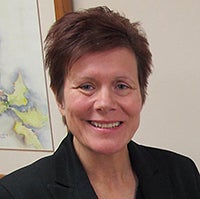Technology changing care of older adults
Published 10:48 am Thursday, August 14, 2014
Guest Column by Deb Taylor
Family caregiving has taken a quantum leap in the past 164 years. In 1850, 70 percent of elderly adults lived with their children. When a parent or grandparent needed help, the helpful support was under the same roof. And the younger generations in the household had a good understanding about what it was like to grow old — they saw it up close. By 1950, 21 percent of the overall population lived in multigenerational homes. Today, only 16 percent of seniors live with family.
In Minnesota, we see many older adults living independently at home well into their 80s, 90s and beyond. They still need support from loving caregivers who may live under the same roof or stop by frequently to help with cooking, shopping, household chores and health needs. Other families are more dispersed, with children and other relatives scattered across the country.
Today’s family of caregivers can benefit in a big way from technology. I recently heard about a woman who has a smartphone app enabling her to see her frail mother — via small cameras in the home — when the daughter is away from the residence.
It gives mother and daughter peace of mind — a high-tech connection when they cannot be together. Popular ‘call medallions’ worn around the neck empower seniors to summon help when they fall or need other emergency assistance.
The Internet at its best
The most exciting recent technological development for us is CareNextion.org, a free website powered by Senior Community Services. It is a secure and confidential Internet resource that mobilizes family, friends and neighbors to help communicate and coordinate care for the older adult. The website helps seniors maximize their ability to live a vital and engaging life. And it helps reduce caregiver stress, too.
As a secure and private care coordination tool, CareNextion strengthens informal support networks through centralized coordination of care, task assignment, journaling and communication with care team members.
Here’s a typical care scenario: adult children living at a distance coordinating care for a parent. The care team may include other relatives, a trusted neighbor, and several members of their parent’s church. Everyone who has the confidential password can log into CareNextion to find local resources, see upcoming appointments, and coordinate transportation and other needed tasks and household chores.
Senior Community Services is continually updating CareNextion to keep it truly local for Minnesota families seeking senior resources near their loved one.
CareNextion is a tremendous boon for caregivers who support a loved one, often at the expense of their own needs. Caregiver fatigue is very real. Day after day they make meals, handle household chores, schedule medical appointments, track care needs and report to other loved ones through seemingly endless phone calls, emails and texts.
The CareNextion support network reduces the hours caregivers spend on assisting seniors with daily tasks, improves caregivers’ perceptions of their own health and lessens the overall stress associated with caregiving.
We all need a little help at one time or another; someone who can rally around us, listen to our needs and walk with us through the challenges. Senior Community Services’ mission is all about community — as we celebrate the later years together.
With CareNextion, we tap the Internet for a higher calling and reimagine aging for the 21st century.
Deb Taylor is CEO of Senior Community Services (www.seniorcommunity.org) and the Reimagine Aging Institute, a nonprofit that advocates for older adults and helps seniors and caregivers maintain their independence through free or low-cost services.


